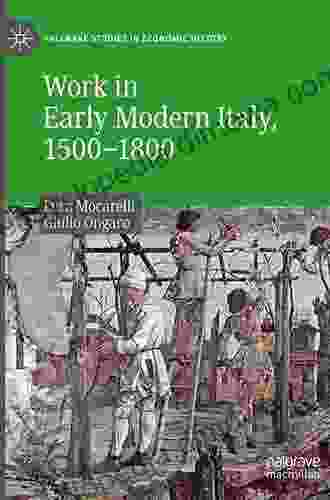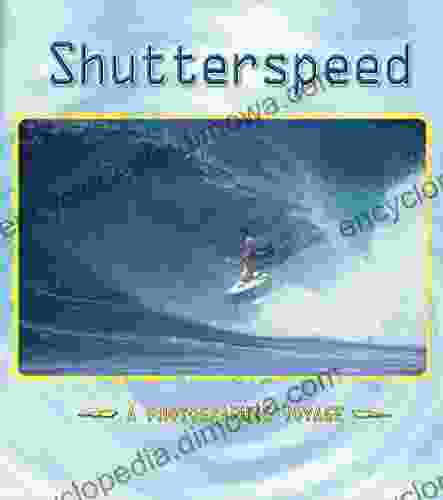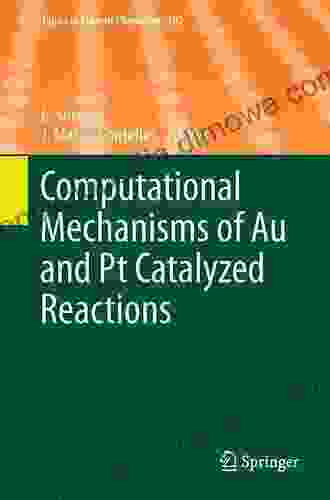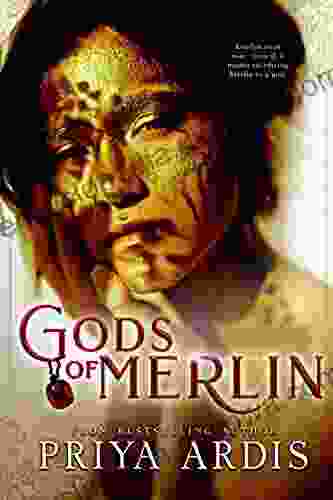Unlock the Secrets of Au and Pt Catalysis: A Comprehensive Guide to Computational Mechanisms

Gold (Au) and platinum (Pt) are two of the most important catalysts used in a wide range of industrial and environmental processes. They are highly effective in promoting a variety of reactions, including the oxidation of carbon monoxide, the hydrogenation of alkenes, and the reforming of hydrocarbons. Understanding the mechanisms of these reactions is essential for developing new and improved catalysts. This book provides a comprehensive overview of the computational methods used to study the mechanisms of Au and Pt catalyzed reactions. It covers a wide range of topics, from the basics of density functional theory (DFT) to the latest advances in machine learning and artificial intelligence (AI).
Table of Contents
- Density Functional Theory
- Transition State Theory
- Microkinetic Modeling
- Machine Learning and Artificial Intelligence
- Applications of Computational Catalysis
Chapter 1:
This chapter provides an overview of the book and its goals. It discusses the importance of catalysis in general, and the specific role of Au and Pt in catalysis. It also introduces the different computational methods that will be covered in the book.
4.3 out of 5
| Language | : | English |
| File size | : | 9797 KB |
| Text-to-Speech | : | Enabled |
| Screen Reader | : | Supported |
| Enhanced typesetting | : | Enabled |
| Print length | : | 268 pages |
Chapter 2: Density Functional Theory
This chapter provides a detailed overview of DFT. It covers the basic concepts of DFT, such as the Hohenberg-Kohn theorem and the Kohn-Sham equations. It also discusses the different approximations that are used in DFT, such as the local density approximation (LDA) and the generalized gradient approximation (GGA).
Chapter 3: Transition State Theory
This chapter discusses transition state theory (TST). TST is a powerful tool for understanding the mechanisms of chemical reactions. It provides a way to calculate the rate of a reaction and to identify the transition state, which is the highest energy point on the reaction pathway. This chapter discusses the different methods that are used to calculate transition states, such as the nudged elastic band (NEB) method.
Chapter 4: Microkinetic Modeling
This chapter discusses microkinetic modeling. Microkinetic modeling is a powerful tool for simulating the behavior of catalytic reactors. It can be used to predict the conversion, selectivity, and yield of a reaction, as well as the temperature and pressure dependence of the reaction. This chapter discusses the different methods that are used to develop microkinetic models, such as the mean field approximation and the Monte Carlo method.
Chapter 5: Machine Learning and Artificial Intelligence
This chapter discusses machine learning and artificial intelligence (AI). Machine learning and AI are rapidly growing fields that have the potential to revolutionize many areas of science and engineering. This chapter discusses the different ways that machine learning and AI can be used to study catalysis, such as developing new catalysts, predicting reaction rates, and simulating catalytic reactors.
Chapter 6: Applications of Computational Catalysis
This chapter discusses the applications of computational catalysis. Computational catalysis is used in a wide range of industries, including the chemical, pharmaceutical, and energy industries. This chapter provides examples of how computational catalysis is used to develop new catalysts, improve existing catalysts, and design new catalytic processes.
This book provides a comprehensive overview of the computational methods used to study the mechanisms of Au and Pt catalyzed reactions. It covers a wide range of topics, from the basics of DFT to the latest advances in machine learning and AI. This book is an essential resource for anyone who wants to understand the mechanisms of catalysis and develop new and improved catalysts.
4.3 out of 5
| Language | : | English |
| File size | : | 9797 KB |
| Text-to-Speech | : | Enabled |
| Screen Reader | : | Supported |
| Enhanced typesetting | : | Enabled |
| Print length | : | 268 pages |
Do you want to contribute by writing guest posts on this blog?
Please contact us and send us a resume of previous articles that you have written.
 Book
Book Novel
Novel Page
Page Chapter
Chapter Text
Text Story
Story Genre
Genre Reader
Reader Library
Library Paperback
Paperback E-book
E-book Magazine
Magazine Newspaper
Newspaper Paragraph
Paragraph Sentence
Sentence Bookmark
Bookmark Shelf
Shelf Glossary
Glossary Bibliography
Bibliography Foreword
Foreword Preface
Preface Synopsis
Synopsis Annotation
Annotation Footnote
Footnote Manuscript
Manuscript Scroll
Scroll Codex
Codex Tome
Tome Bestseller
Bestseller Classics
Classics Library card
Library card Narrative
Narrative Biography
Biography Autobiography
Autobiography Memoir
Memoir Reference
Reference Encyclopedia
Encyclopedia A K Williams
A K Williams P K Mallick
P K Mallick A K Vyas
A K Vyas Steph Davis
Steph Davis Alexis Mantheakis
Alexis Mantheakis Anelle Ammons
Anelle Ammons Michael Brin
Michael Brin Elisabeth Sowerbutts
Elisabeth Sowerbutts Eduardo Olid Guerrero
Eduardo Olid Guerrero Sharon Purtill
Sharon Purtill Wendy Townsend
Wendy Townsend Milton P Dentch
Milton P Dentch Kelly Hayes Raitt
Kelly Hayes Raitt Patrick Pringle
Patrick Pringle A J Whitten
A J Whitten Violet Taylor
Violet Taylor Philip Howard
Philip Howard Young Kim
Young Kim Sandy L Davis
Sandy L Davis Jordan L Hess
Jordan L Hess
Light bulbAdvertise smarter! Our strategic ad space ensures maximum exposure. Reserve your spot today!

 Lee SimmonsMan With Racket: The Action-Packed Espionage Thriller That Will Have You on...
Lee SimmonsMan With Racket: The Action-Packed Espionage Thriller That Will Have You on... Howard PowellFollow ·6.4k
Howard PowellFollow ·6.4k Denzel HayesFollow ·12.6k
Denzel HayesFollow ·12.6k Carson BlairFollow ·5.5k
Carson BlairFollow ·5.5k Charles DickensFollow ·5.8k
Charles DickensFollow ·5.8k Ryūnosuke AkutagawaFollow ·16.1k
Ryūnosuke AkutagawaFollow ·16.1k Edgar HayesFollow ·3.6k
Edgar HayesFollow ·3.6k Jerry HayesFollow ·5.2k
Jerry HayesFollow ·5.2k Floyd PowellFollow ·11.3k
Floyd PowellFollow ·11.3k

 Zadie Smith
Zadie SmithWork in Early Modern Italy 1500-1800: A Captivating...
: Unraveling the Enigmatic...

 Noah Blair
Noah BlairIceland's Most Unusual Museums: A Quirky Guide to the...
Iceland is a land of natural wonders, from...

 Ross Nelson
Ross NelsonShutterSpeed - A Photographic Voyage
Embark on an Unforgettable Photographic...

 Wayne Carter
Wayne CarterUnveiling the Secrets: Detailed Streamside Field Guide to...
Embark on an unforgettable fly fishing...

 Patrick Rothfuss
Patrick RothfussHannah Montana: Reality Check Junior Novel 19
The Ultimate Behind-the-Scenes Adventure for...

 Chad Price
Chad PriceCreate More Than 30 Projects from Vintage Pieces: Unleash...
Embrace the Art of...
4.3 out of 5
| Language | : | English |
| File size | : | 9797 KB |
| Text-to-Speech | : | Enabled |
| Screen Reader | : | Supported |
| Enhanced typesetting | : | Enabled |
| Print length | : | 268 pages |










